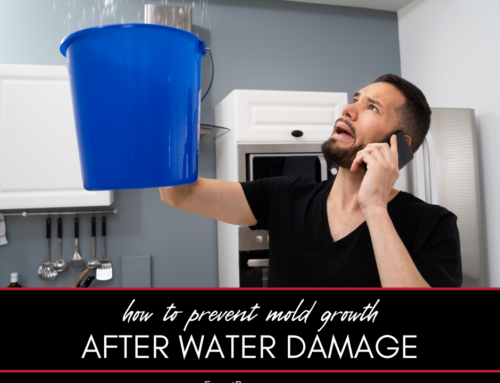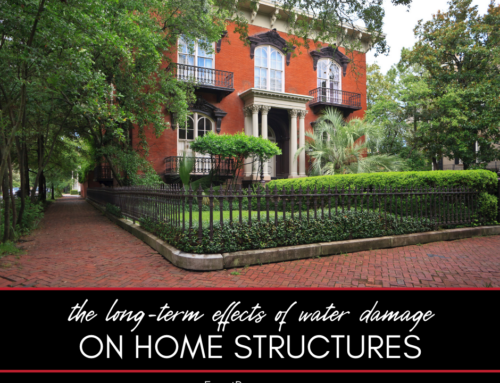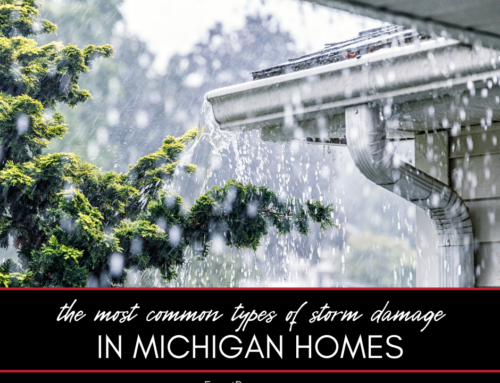Historic homes in Michigan are treasures that require special care and attention, especially when dealing with water damage. Water damage can compromise the structural integrity and historical value of these properties if not addressed promptly and properly. This guide explores the unique challenges of water damage restoration for historic homes and provides insights into effective restoration practices.
Water Damage Restoration for Historic Homes in Michigan
This guide provides detailed steps and considerations for restoring water damage in historic homes in Michigan. It covers the following:
- Understanding the importance of preserving historic homes
- Common causes of water damage in historic homes
- Assessing water damage in historic properties
- Challenges of restoring historic homes
- Specialized restoration techniques
- Importance of professional restoration services
- Preventative measures for historic homes
Here’s a closer look at each.
Understanding the Importance of Preserving Historic Homes
Historic homes are an integral part of Michigan’s heritage, reflecting the architectural styles, craftsmanship, and history of bygone eras. Preserving these homes is essential for maintaining the cultural and historical fabric of communities. Water damage can threaten the unique features and materials of historic homes, making it crucial to address any issues promptly and effectively. Proper restoration not only protects the structural integrity of the home but also ensures that its historical value is maintained for future generations.
Related: Expert advice on water damage, fire damage, mold and more
Common Causes of Water Damage in Historic Homes
Several factors can contribute to water damage in historic homes, including aging infrastructure, outdated plumbing, and environmental conditions. Leaking roofs are a common issue, often caused by deteriorated shingles, flashing, or structural components. Old or corroded plumbing systems can lead to burst or leaking pipes. Poor drainage and grading around the foundation can result in water infiltration, while heavy rains or rising groundwater levels can cause flooding. Additionally, inadequate waterproofing or sealing of windows, doors, and foundations can allow water to enter the home. Understanding these causes helps in identifying potential vulnerabilities and addressing them promptly.
Assessing Water Damage in Historic Properties
Assessing water damage in historic properties requires a thorough inspection to identify both visible and hidden issues. Start with a visual inspection of the exterior and interior of the home, looking for signs of water damage such as water stains or discoloration on walls, ceilings, and floors, warped or buckled flooring and woodwork, peeling paint or wallpaper, and musty odors indicating mold or mildew growth. Also, check for cracks or deterioration in the foundation. Use moisture meters and infrared cameras to detect hidden moisture and assess the extent of the damage. Document all findings with photos and notes to aid in the restoration process and for insurance purposes.
Related: Sewage backup in your home
Challenges of Restoring Historic Homes
Restoring water damage in historic homes presents unique challenges that require specialized knowledge and techniques. Preserving original materials and architectural features is a priority, as replacing them can compromise the historical integrity of the home. Addressing outdated plumbing and electrical systems can be complex, as modern replacements must often be integrated without disrupting the historical aesthetic. Navigating local and state regulations for historic preservation is another challenge, as specific guidelines must be followed to maintain the home’s historical designation. Additionally, finding skilled craftsmen and appropriate materials that match the original construction can be difficult but is essential for an authentic restoration.
Specialized Restoration Techniques
Specialized restoration techniques are necessary to address water damage in historic homes effectively. Dehumidification and drying processes are tailored to the specific materials used in historic construction, ensuring that delicate structures are not further damaged. Careful cleaning and mold remediation techniques are used to preserve historical finishes and details. Professionals use gentle yet effective methods to clean and restore original woodwork, plaster, and masonry. In some cases, custom milling and fabrication are required to replace damaged elements with historically accurate replicas. These specialized techniques ensure that the restoration respects the home’s historical integrity while addressing modern concerns.
Importance of Professional Restoration Services
Given the complexity of restoring historic homes, professional restoration services are essential. Professionals have the expertise to identify and address the unique challenges posed by historic properties. They can navigate preservation regulations, source appropriate materials, and apply specialized techniques to ensure a successful restoration. Additionally, professionals can provide thorough documentation of the restoration process, which is often required for insurance and historical records. Calling a professional for water damage restoration not only ensures that the work is done correctly but also protects the historical value and integrity of the home. Exact Recon is a trusted provider of such professional services in Michigan.
Preventative Measures for Historic Homes
Implementing preventative measures can help protect historic homes from future water damage. Regular maintenance is crucial, including inspecting and repairing roofing, plumbing, and foundations. Ensuring proper drainage around the home can prevent water from accumulating near the foundation. Installing sump pumps and waterproofing basements can mitigate the risk of flooding. Using dehumidifiers and maintaining proper ventilation helps control indoor humidity levels, reducing the risk of mold growth. Additionally, updating old plumbing and electrical systems with modern, yet historically sensitive, replacements can prevent leaks and other issues. These preventative measures help preserve the home’s integrity and historical value.
FAQ About Water Damage Restoration for Historic Homes
Check out these commonly asked questions about water damage restoration for historic homes. If you don’t see your question here, please call our office and we’ll find you the answers you need.
How Quickly Should I Address Water Damage in a Historic Home?
You should address water damage in a historic home as soon as possible to prevent further deterioration and mold growth. Prompt action is crucial for preserving the home’s structural integrity and historical value.
Can I Restore Water Damage in a Historic Home Myself?
While minor repairs may be manageable, restoring water damage in a historic home typically requires professional expertise. Professionals have the specialized knowledge and techniques needed to address the unique challenges of historic properties.
Related: How does homeowners insurance work after a disaster?
How Do Professionals Preserve Original Materials During Restoration?
Professionals use specialized techniques to clean, dry, and restore original materials without causing further damage. They may use custom milling and fabrication to replace damaged elements with historically accurate replicas.
What Are the Signs of Hidden Water Damage in a Historic Home?
Signs of hidden water damage include musty odors, peeling paint or wallpaper, water stains or discoloration on walls and ceilings, warped or buckled flooring, and mold growth. Use moisture meters and infrared cameras for detection.
Why Is Professional Restoration Important for Historic Homes?
Professional restoration is important for historic homes because professionals can navigate preservation regulations, source appropriate materials, and apply specialized techniques. This ensures that the restoration respects the home’s historical integrity while addressing modern concerns.
Do You Need a Disaster Remediation Expert in Washtenaw County or Jackson County?
If your home has already been damaged, we can help. Check out our services and call Exact Recon for your free disaster remediation quote today. We offer:
- Water damage restoration
- Fire damage restoration
- Mold removal and remediation
- Fire and smoke restoration
- Sewer cleanup and disinfecting
- Reconstruction
- Wind and storm damage repair









